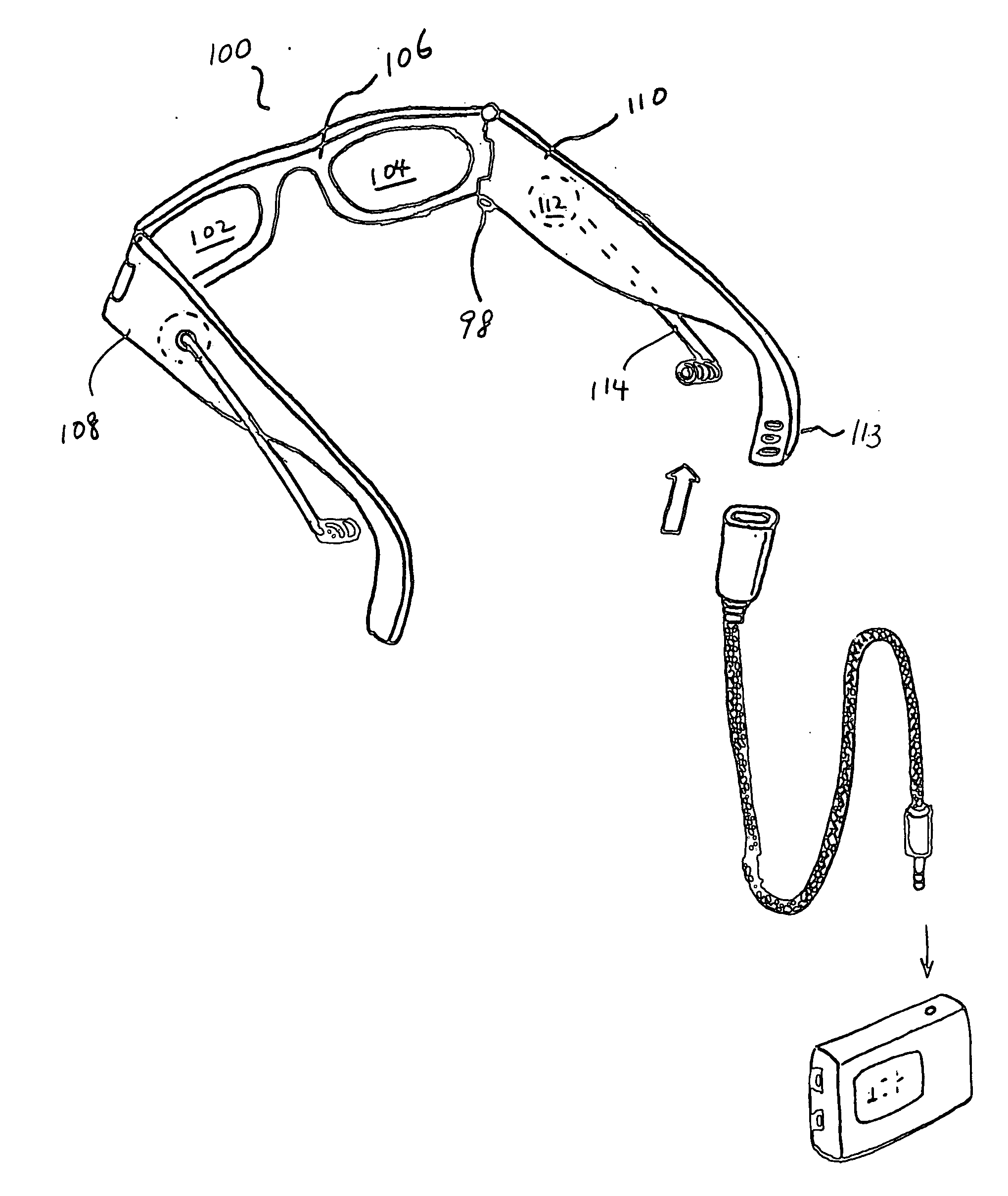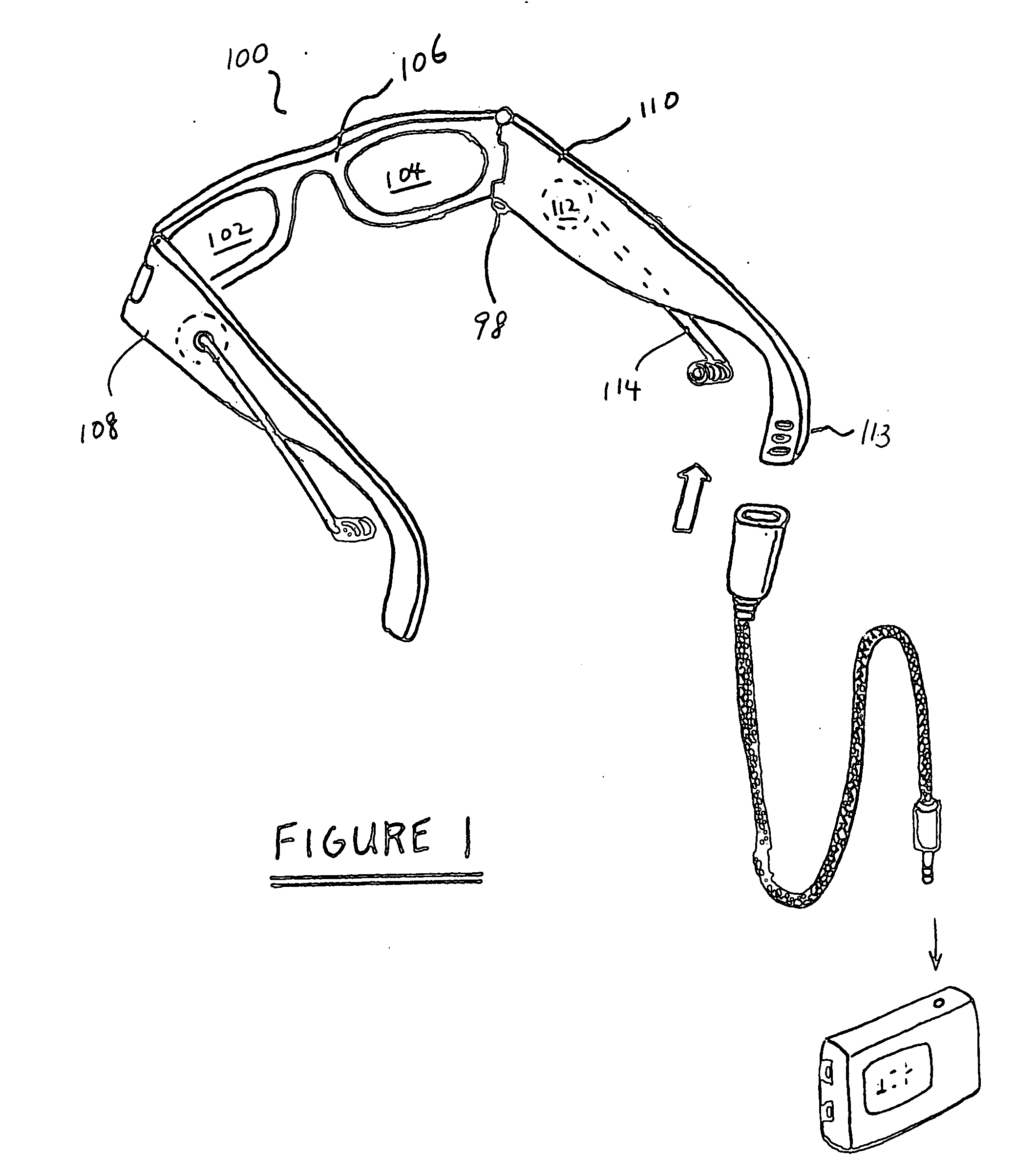Eyeglasses with hearing enhanced and other audio signal-generating capabilities
- Summary
- Abstract
- Description
- Claims
- Application Information
AI Technical Summary
Benefits of technology
Problems solved by technology
Method used
Image
Examples
Embodiment Construction
[0061] The present invention provides different embodiments of glasses that can be applied to multiple functions. With a user wearing such a pair of glasses, it would be more difficult for a third party to know the specific function or reason the user is wearing the glasses for. Regarding the locations of the electrical components for the multiple functions, different embodiments range from all of the components in the glasses to the glasses primarily functioning as a headset.
[0062]FIG. 1 shows one embodiment of the invention with a pair of glasses 100 having speakers. The glasses 100 include a first lens holder 102 and a second lens holder 104. Both lens holders are for receiving lenses. The first lens holder 102 has a first side and a second side. The second lens holder 104 also has a first side and a second side. The pair of glasses has a bridge element 106. The bridge element 106 is coupled to the first side of the first lens holder 102 and the second side of the second lens ho...
PUM
 Login to View More
Login to View More Abstract
Description
Claims
Application Information
 Login to View More
Login to View More - R&D
- Intellectual Property
- Life Sciences
- Materials
- Tech Scout
- Unparalleled Data Quality
- Higher Quality Content
- 60% Fewer Hallucinations
Browse by: Latest US Patents, China's latest patents, Technical Efficacy Thesaurus, Application Domain, Technology Topic, Popular Technical Reports.
© 2025 PatSnap. All rights reserved.Legal|Privacy policy|Modern Slavery Act Transparency Statement|Sitemap|About US| Contact US: help@patsnap.com



